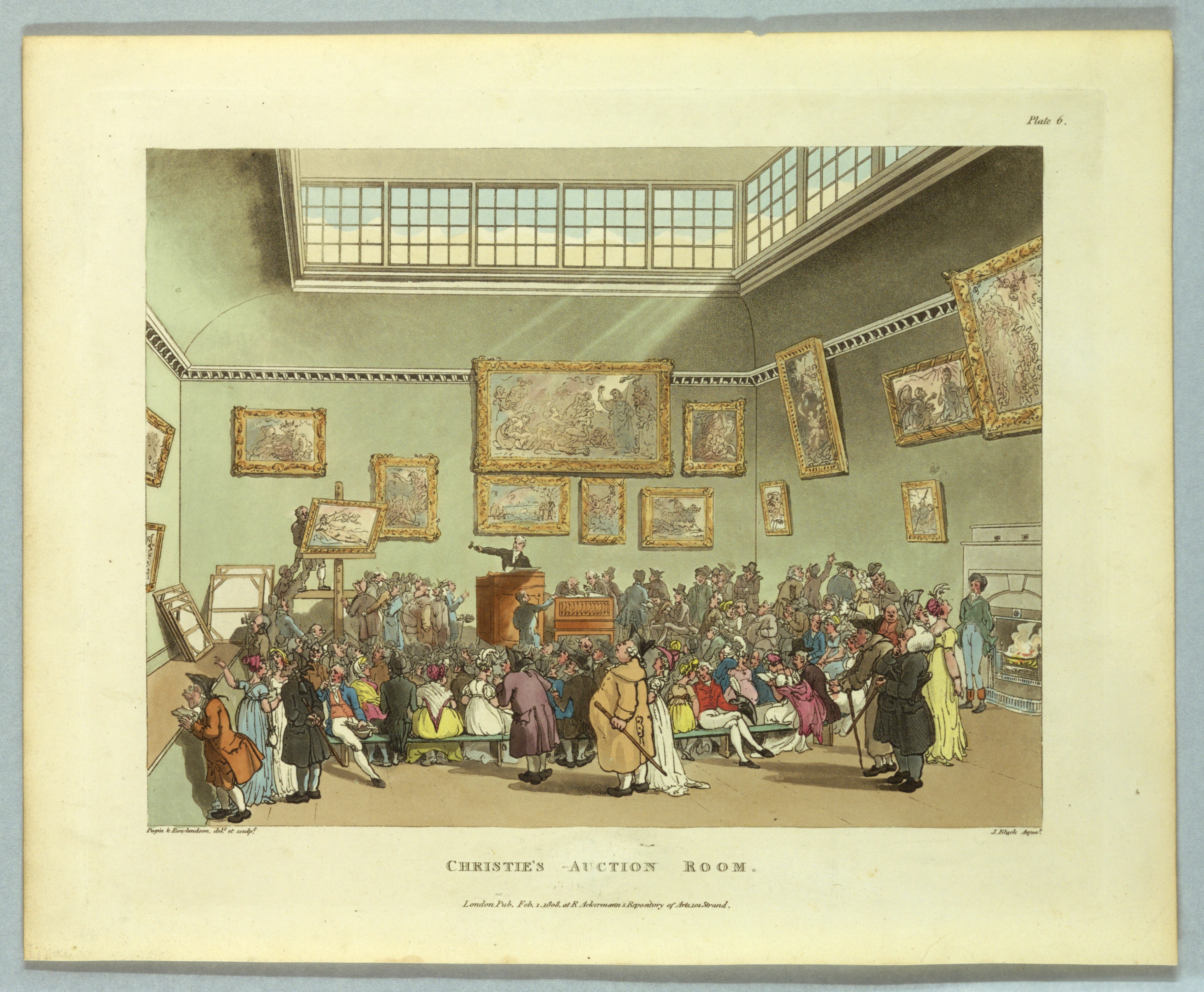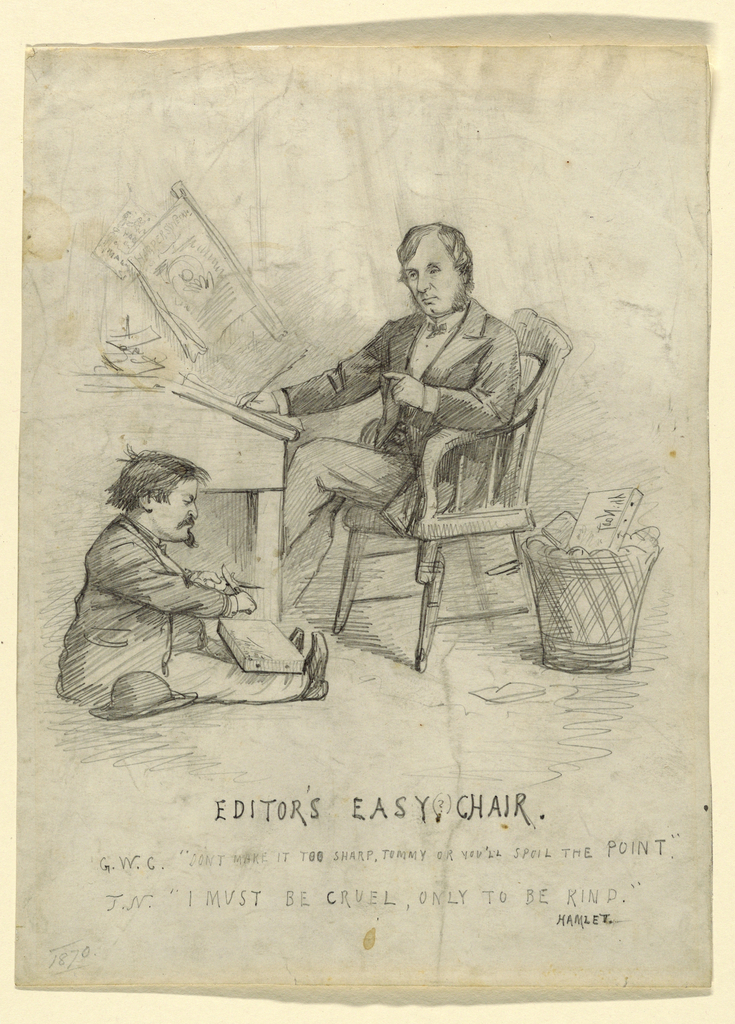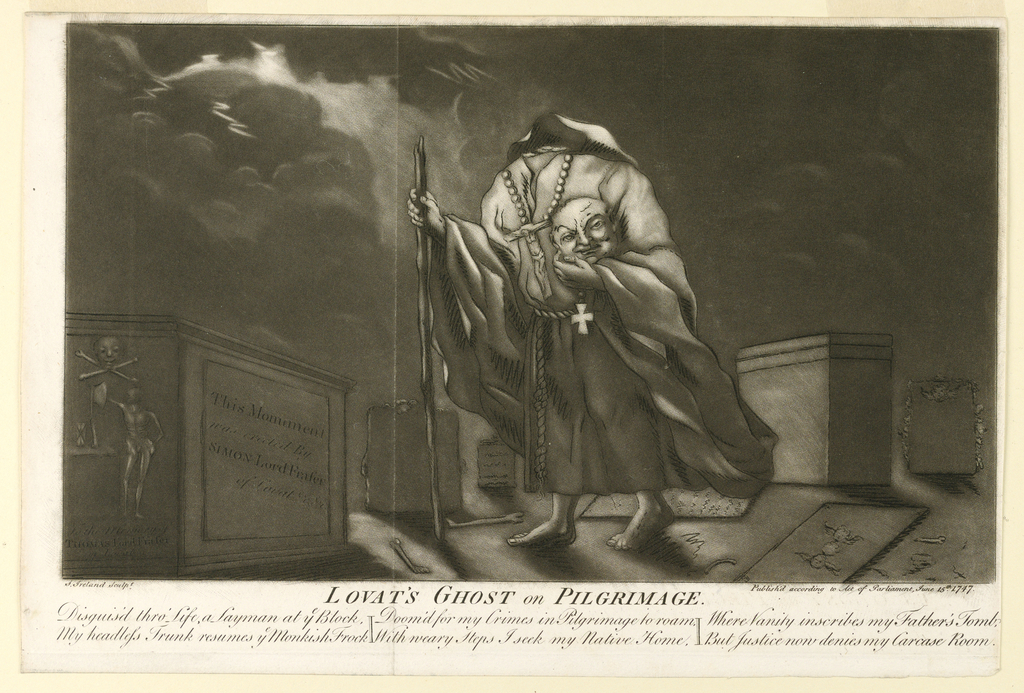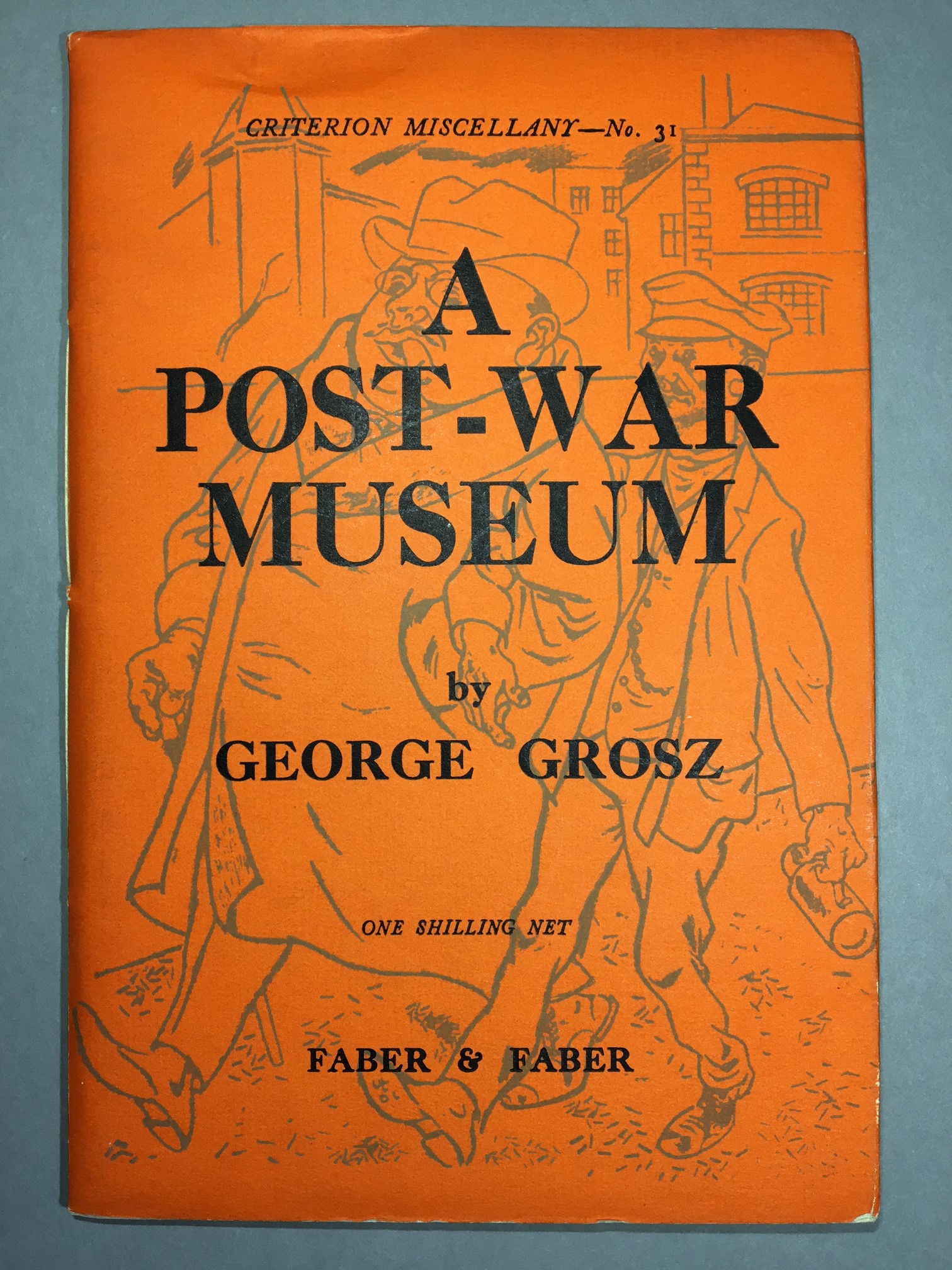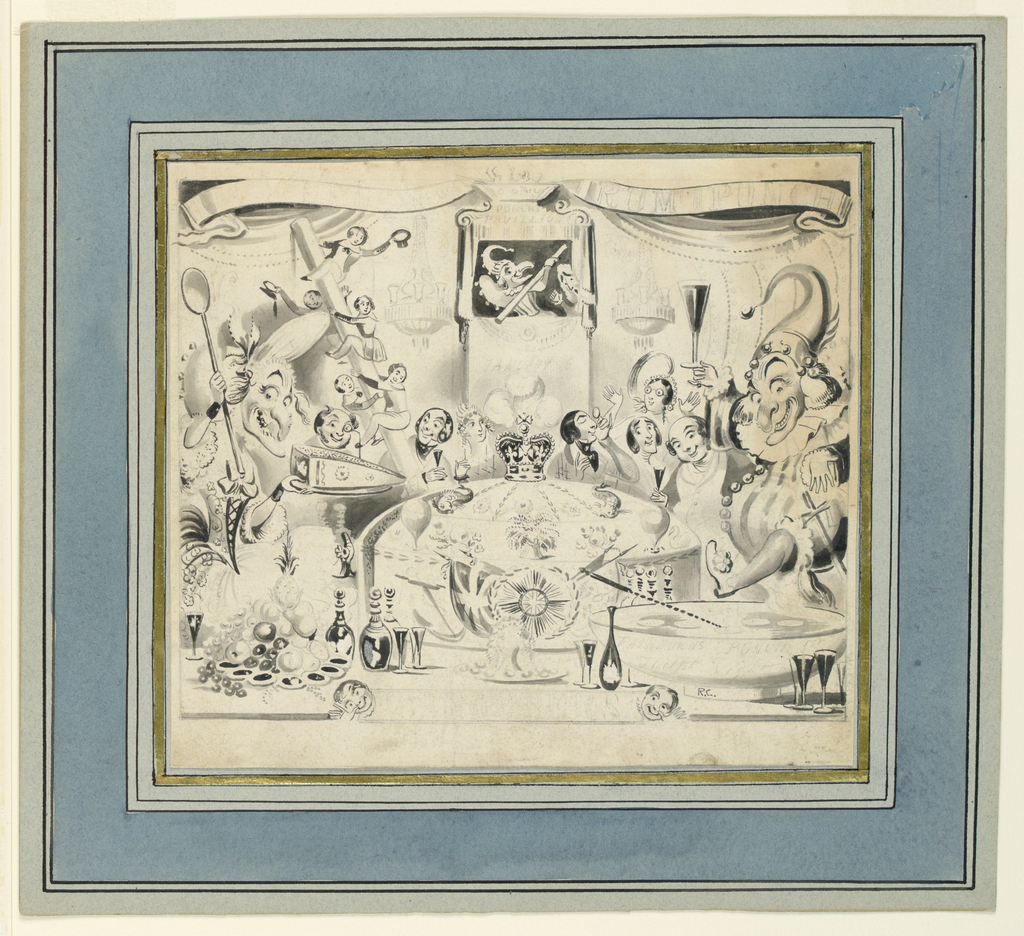Comprised of 104 individual plates and published in three volumes between 1808 and 1810, The Microcosm of London was originally issued in twenty-six monthly parts. Published by Rudolph Ackermann (1764—1834), it supplied the luxury print market with a comprehensive volume on contemporary London. Cooper Hewitt holds a large number prints from the Microcosm, including this...
Today discussions concerning the divisive power of political rhetoric are being addressed throughout the national media. This drawing captures a pivotal moment in nineteenth-century American history that juxtaposes a similar debate. Thomas Nast (1840-1902) joined the staff of Harper’s Weekly in 1862 and his drawings of the Civil War established his reputation. George William Curtis...
Beneath a foreboding sky streaked with lightning, a figure wanders through a cemetery. Barefooted and dressed in a monk’s habit, he seems to be missing something. Quite literally, it may be his head, whose snarling visage is directed out at the viewer from the crook of this gruesome monastic’s left elbow. But who is this...
By Annaleigh McDonald This bright gem from the Cooper Hewitt Library’s rare book collection contains the work of George Grosz, a German artist who immigrated to the United States at age 39 in 1933, eventually becoming a naturalized citizen in 1938. Known for his scathing caricatures of post-war life in Germany, Grosz was vehemently anti-Nazi,...
This raucous drawing was made by English printmaker (Isaac) Robert Cruikshank in 1836. Cruikshank’s dense scene includes genteel figures seated around an enormous, decorated cake while others, emboldened by inebriation, climb a rafter at the left. Two oversized and garish figures both literally and figuratively steal the cake; however: the male figure holds a full...
